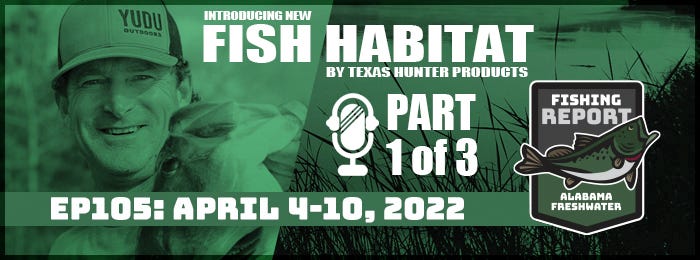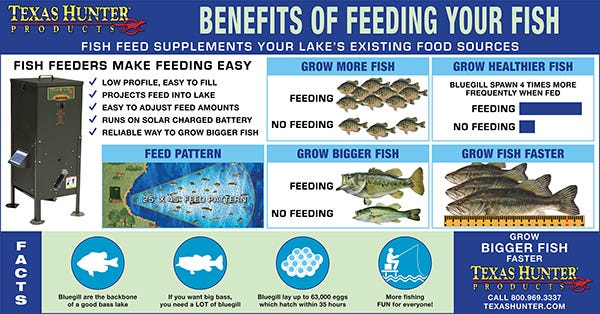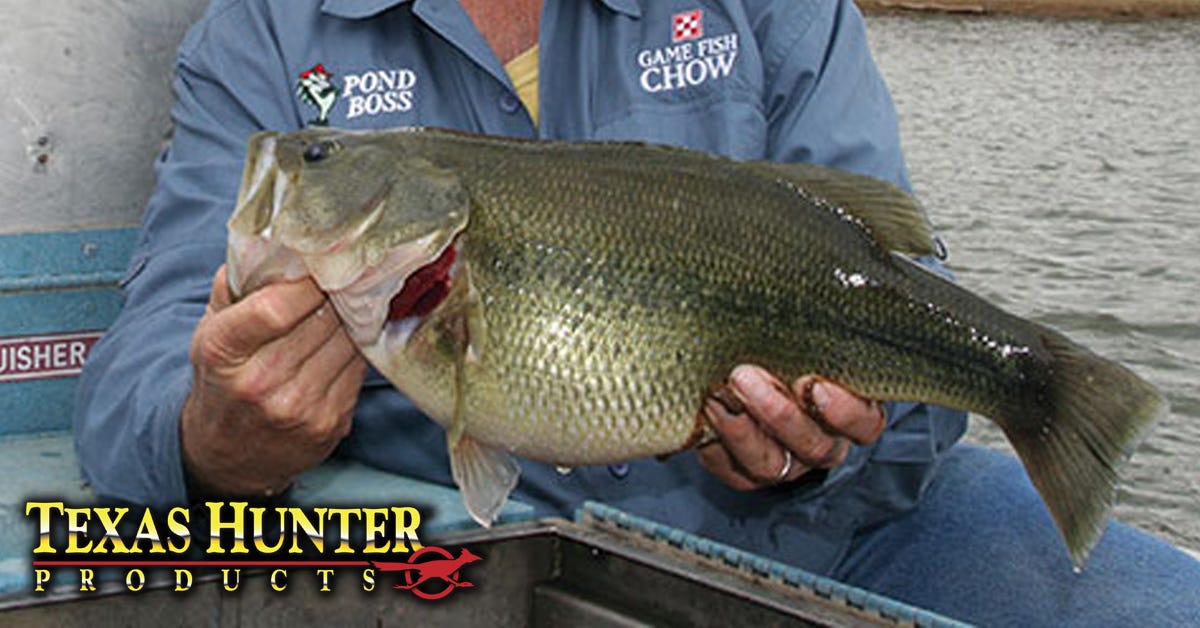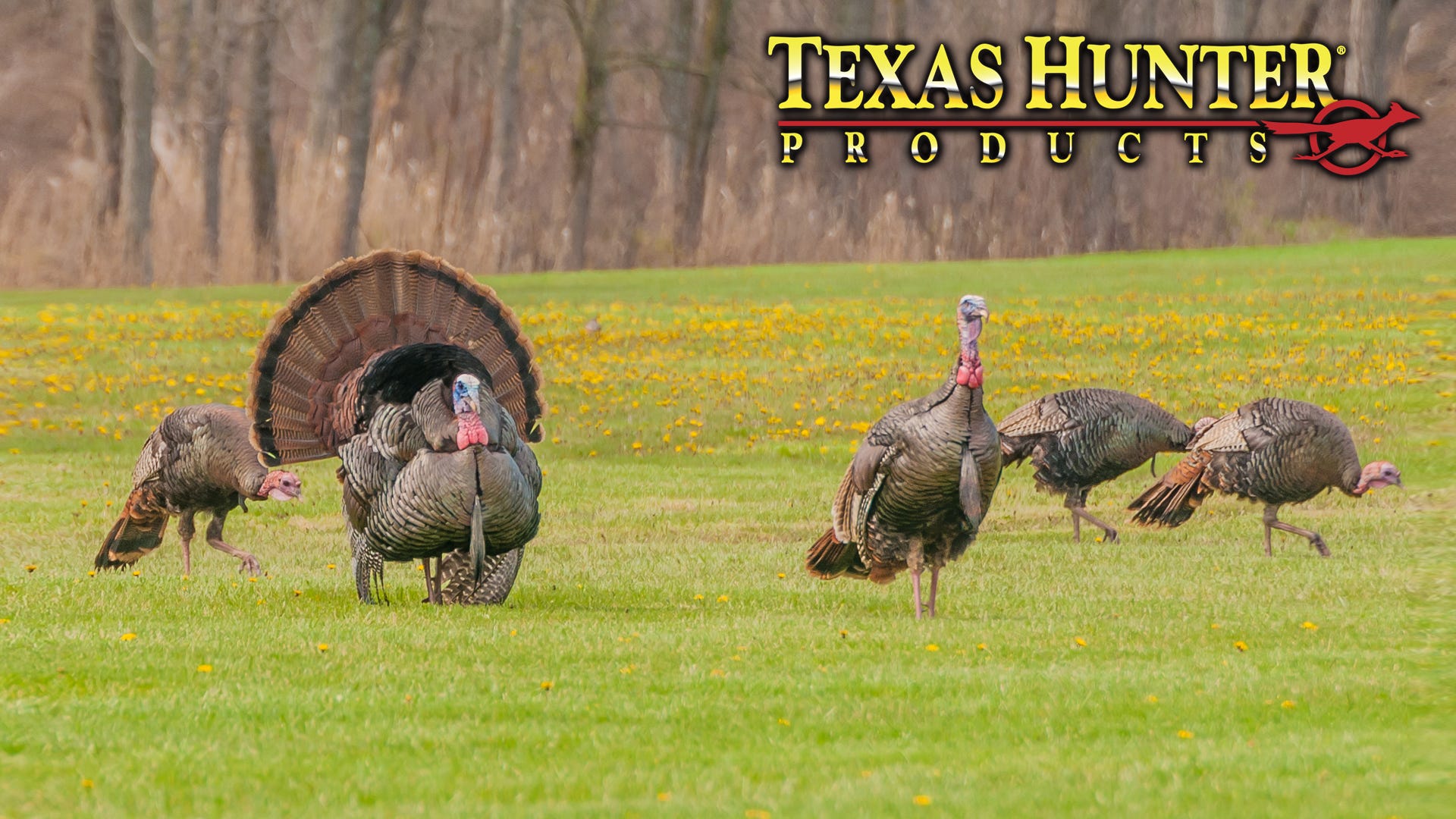- Apr 25, 2022
Alabama Freshwater Fishing Report Podcast - Part 1 of 3

Alabama Freshwater Fishing Report - April 4-10, 2022 - Fish Habitat Part 1 of 3
Brian Senn: Hey guys, and welcome to the Alabama Freshwater Fishing Report, the first podcast to bring you the local fishing report for Alabama’s lakes and rivers, whether it’s good, bad, or ugly. Presented by "Great Days Outdoors" magazine.
Are you frustrated by your typical hunting and fishing magazines? Are you tired of reading content meant for guys up north or in the Midwest? Don’t get left behind following the guidance of guys who don’t hunt and fish in your home state. Pick up a "Great Days Outdoors" magazine subscription and become a better southern outdoorsman.
"Great Days Outdoors" magazine can be found at your local Barnes & Noble’s, Books-A-Million, Tractor Supply Company, Rural King, Bass Pro Shops, or you can subscribe online at greatdaysoutdoors.com.
Brian Senn: What’s up guys? I’m your host, Brian Senn. Welcome to this week’s show, Alabama Freshwater Fish Report. Man, really looking forward to this show today. We’ve got some incredibly cool, cool stuff, so many cool products to talk about. And man, you know, here in Alabama, this time of year, we talked about it last week, probably the week before, we’ll probably talk about it next week, the weather’s just changing like crazy right now.
Man, you got cold for– we got 36-degree temperatures coming again this weekend, and you know it affects the fish. And I love hearing from our fishermen each week about how they’re catching them, how their transition, and what the fish are doing. And it’s just such a great resource for all of us. It’s an exciting time of the year to fish, we all kind of look forward to the spring. But there’s also a lot of spring challenges, too, with the amounts of rain that we’ve been getting and the temperature changes.
But we’re going to get back to talking to some of those fishermen next week to see how they’ve handled the storms this week. And I’m sure there’ll be more storms next week. But this week, I say it all the time on here, guys. We have Norman with Southeastern Pond Management on to do our Management Minute Show. And it’s always one of the shows that I enjoy the most, because Norman just has such good insight and knowledge and just professionalism. And so, always love to hear what we’re going to talk about with Norman.
And this week, on the show, we’re going to be talking about structure, what’s the best structure to put out for fish, to hold fish, all the different things that you know, we want to fish around something, right? And so, hey, we’ve got another special guest. I’m going to let Norman introduce him. But first of all, Norman how’s it going, brother?
Norman Latona: Oh, doing great, doing great. How are you doing, Brian?
Brian Senn: I’m doing good, man. We’ve just been watching this weather and keep an eye on all these storms. And hopefully, we won’t have any tornadoes roll through here this week.
Norman Latona: Amen to that.
Brian Senn: Yeah. Well, Norman, I know we’re going to be talking. This week, one of our focuses for the show today is fish structure. And you know, putting out the right kind of fish structure, what’s the best to put out for different fish, whether it’s crappie or bream, or bass. And so I’m excited to hear your input on that. But we also have another very special guest that we’re excited to have on, Chris with Texas Hunter is going to be on here. So man, introduce us to Chris.
Norman Latona: Yeah, so this is one of my favorite subjects quite honestly, and something we enjoy a whole lot in, particularly in some of these older lakes that we deal with. You know, they’re sort of bereft of cover in natural habitat structure.
And Chris, Chris Blood, who’s the Marketing Manager for Texas Hunter Products, they’ve worked with us and Auburn University now for a couple of years, developing just a fantastic offering in the way of fish habitat and attractants to put in these lakes and ponds, and enhance natural habitat or the habitat for fish.
And you know, when Chris and I first started visiting about the subject, you know, fish are pretty adaptive. They don’t necessarily care what the cover is, what that habitat looks like, you know. They just know that they like it, and they can hide in it, and they can escape predators in it, and they can use it to ambush prey, and all these things.
But not all structure is created the same from an angler standpoint. So, what Chris and his team did such a phenomenal job of, and I’ll let him kind of go through the process is to develop habitat structure that’s easily deployable into the lake. And it’s also very angler friendly, so it’s kind of snag-proof and lasts a long, long time, and simple to put it out. And so, and it’s also obviously very effective in attracting fish.
So, Chris, welcome. Glad you could join us today.
Chris Blood: Hey, thank you, Norman. Hello, Brian. I appreciate you having me on today.
Brian Senn: Absolutely, Chris. We’re excited to have you on, man. And I’m sitting here looking through your website right now at some of your products, and we all, I mean, most all love to deer hunt, too. Right? So, I don’t, know a whole lot of people that listen to this who aren’t going to be familiar with your deer hunting products, because ya’ll have such amazing products on that site. And so, to me, it’s awesome to see a company that is known for having great products step into the fishing world and create something that honestly, Norman, I haven’t seen anything like it.
Norman Latona: Yeah, there are some products out there. I think from where I sit, Chris and his team really took more of a scientific approach, if you will, to the designs and the process. And you know, just took it all into account - all the variables that are relevant. And so I think what they’ve settled on in terms of these first few items that they’re producing now really offers something for everyone.
You know, you’ve got the stuff that you can suspend in the water column up off the bottom. My favorite is the surface fish attractants like the lily pads and the fishing lilies that are – that simulate, as the name would suggest, you can fish top water around them, and they really attract fish. And you know, I love top water fishing. So yeah, I think it’s very revolutionary in terms of bringing something new to the pond management arena and something that’s sorely needed.
Brian Senn: Yeah, absolutely. And I want to get in and dive into each of those products and talk about them, Chris, with you. But first of all, before we dive into that, what triggered you guys to say, “Hey, let’s get into the fishing industry. Well, you’ve done good in the hunting industry, let’s go fishing!”
Chris Blood: Sure. Well, the company has been around for over 65 years, started in 1954, and Texas Hunter Products is known for our hunting blinds and deer feeders. And almost 20 years ago now, we got into the fishing market by developing a patented line of fish feeders. We have a broad line of fish feeders that feed fish in ponds and lakes.
And we’ve been working with Norman and his team all these years on fish feeders. And so, we were looking for areas that we could expand our business and get into some other product lines on the fishing side of our business. And visiting with Norman over the years, the subject would come up about habitat, and he has some great ideas and things that were creating shade like he mentioned, aquatic vegetation, creating artificial vegetation so that they don’t take over a lake and then you have to come in with herbicides and so forth and be able to do that artificially.
And so, I took those ideas back to Auburn University and we commissioned the School of Design there to come up with some new fish habitat designs - we looked at a lot of different options and they came up with 168 very innovative designs. And from there, we took those back to Norman and some other lake management companies, and Auburn’s renowned School of Fisheries - got their feedback, and then just started the development process.
And so that’s how all of this came about. It’s been about a two-year process. And we’ve boiled it down to six new products to launch the new line that we’re proud of and that are very effective. And we’ve got a little bit everything top water, midwater, shallow water. There’s even a spawning device that we’ve talked about. And so, this is our initial launch and array into the fish habitat product line.
Brian Senn: I’ll say the smartest thing these boys did was come over here to Auburn to get their advice, right?
Chris Blood: That’s exactly right. You got it. Yes, sir. That’s the first place we went.
Brian Senn: They got a great fisheries program, no doubt about that. They do. So the feedback from there, I’m sure they were very helpful.
Chris Blood: They were.
Brian Senn: And I do want to walk through some of these products with you, and then we’ll talk about the importance of them as we go. You know, I’ll just say just from looking at this, at some of them that I’m looking at right now. You know, I’ve got people here every week, some of the best crappie fishermen in the country by far, Tony Adams down in Eufaula was on our show last week, and he was sending me pictures. He puts out, literally hundreds and hundreds, and hundreds of artificial, or not artificial, but manmade structure every year.
And part of what we were talking about last week with him was… he’s like, “Brian, man, people think that if they throw Christmas tree’s out that it’s there for years and years, and years. That’s not the case. And now that we have the electronics that we have now, we can see that, you know, you go through all the trouble of gathering the trees, putting them on a trailer or a truck, getting them to a boat, tying the brick on them, sinking them, and two years later, there’s really, not a lot left. You know, two, three years is about all you get out of that.”
And, Tony, I know, you know, he was sending me stuff last week. I mean, they’re having to get flat bottom pontoon boats and take the sides off of it, and they’re hauling stuff in it. It is a massive undertaking to create the fish structure that these guys create and they don’t get all that many years of use out of it. So, this is something that for me, I look at it, and I’m like, man, you know, I don’t want to have to go, probably not going to take the time to go build the things that they’re building and putting them on trailers, and putting them on pontoons - When I could take something like this first product I’m looking at right here of the Fish Pyramid, it’s the first picture on your website.
That looks like something that could take the place of what these guys are doing. Make it easy to transport and will be there for, dang, there forever.
Chris Blood: Forever. You’re exactly right, Brian. That product and all of our fish habitat products, that’s one of the first criteria was that number one, they’re environmentally friendly and designed to last forever. So, we can put them in the water, they’re made out of the same materials as kayaks and floating docks, and other things that are in ponds and lakes. And the other requirement was that they are easy to assemble, so you can get them out on a boat, put them together, drop them in the water, and they are designed to last forever. As Norman said it, they’ll last a long time. They really are, they really are a lifetime product. So once you get them in the water, they’re not going anywhere.
Brian Senn: That’s good stuff. What’s the dimensions on this thing?
Chris Blood: We make two sizes of the Fish Pyramids. The first one’s about 3 and a half feet tall, and then we make an XL version that’s about 4 and a half feet tall. And it’s 4-feet wide at the base of each panel all the way around. So collectively, it’s about 146 square feet. That XL takes up a lot a lot of room, it’s tall, it’s wide. So you put a few of those out in the lake, those are ideal around fish feed patterns.
They have slots in them. They’re pyramid shape, but they have slots in them that we designed for bluegill to be able to get in there, so the forage fish can escape the predators like bass, cormorants and other predators and the fish can get inside and take refuge until they get to a size to where they can’t get in that slot. And that’s really when they become the ideal meal size for a largemouth bass.
The fish pyramids also have teeth at the bottom so you can anchor them to the bottom, they’re not going to move around in the current, and then they have blades. We call them “shade blades” that go through the sides. Similar to the branches on trees, like you’re talking about with Christmas trees. And they are also designed to be snag free, they’re not going to snag a fishing lure, and they create that shade so that bass can hang out under.
And one of the things I learned from Norman years ago, was bass, and I didn’t know this, bass don’t have eyelids. So, if there’s anything that creates some shade in the water, they’re going to be hanging out under that. And that was one of the one of the things that I kept in my mind when we came out with these lily pads that float on top of the water, too. They create a lot of shade and they’re an ideal bass hang out.
Brian Senn: Yeah, bass or crappie, or bluegill in one, for sure.
Chris Blood: Yes, that’s right, for sure.
Brian Senn: And, so with this product, this particular product here, how much does it weigh? And do you add weight to sink it, or is it designed to where once you put it together, you just throw it out off the side of the boat?
Chris Blood: The fish pyramid, those, the regular size version, those weigh about 20 pounds. And so they’re four panels that snap together, you put the shade blades through them, and then that material is an HDPE material, it floats. You can suspend them by just simply attaching them to a cinderblock and dropping them off the side of the dock or the side of the boat. And/or you can attach the cinderblock inside, with some cables that come with it, and drop it in, and it’ll sink to the bottom.
So there’s two installation methods for the Fish Pyramids. You can put it on the bottom, and/or you can suspend it out there to create even more shade and structure in that vertical water column, and bass will hang out around and under it, and crappie and other fish all around that unit. So there’s two ways to install it.
Brian Senn: Yeah, that’s very cool. And Norman, I mean, talk to me just for a minute about the importance of that, most of the time, we don’t have the option to suspend structure that we put out. And this is, obviously, this can be suspended and will be suspended for a lifetime. So, talk about the importance of being able to suspend it instead of putting it on the bottom.
Norman Latona: Yeah, so one of the things, one of the suggestions I had early on in the development of the project was, we need to figure out ways to get structure in shallow water and mid depth. And the reason being, and we’ve talked about this as it relates to a variety of other pond management topics, Brian, but it goes back to thermocline, the stratification that occurs in lakes and ponds, in the late spring and summer when the surface temp warms up, and eventually, the water warms up.
By the time we get into the really hart of the fishing season in the late spring and summer, these lakes are stratified so that the fish are all living in the upper several feet of the water column. And the thermocline is at the point at which the temperature drops, but also the oxygen drops. So, fish can’t spend any time below that thermocline. There’s just not enough oxygen in the water for them to survive. So the ability to take these fish structure items and put them exactly where we want them is key to it.
Obviously, the lily pads and even the grass are designed for shallow water, of course, the lily pads, you can suspend over whatever depth you want, and they’re right at the surface. But these larger items, like the pyramids, the ability to keep them up off the bottom ensures that fish can use them year-round, particularly in the part of the season when we’re typically doing a lot of our fishing.
So, you could take these pyramids, and rather than drop them in 10, 12, 15, 20 feet of water, where in the summertime, that depth probably doesn’t have many fish. If any, we can take that same item and suspend it in 8 or 6, or 8 or 10 feet of water, wherever we choose, however long we want to make that rope, and those fish will absolutely utilize it.
So that’s a real key to it, we see all the time when we go out and visit these lakes, folks say, you know, we tell them, look, you need to increase the amount of habitat cover. Not only is it good from a biological perspective, but also enhances the angling. And folks often say, well, there’s tons of cover in this lake. We left all the timber in the deep end, we went and rode it, and we left it there. And surely, the lakes just a few years old, surely, it’s still there, and it is still there. And you can go on the depth finder and see it.
But in a lot of cases, that’s an extreme depth. And in the wintertime, it’ll be full of fish and you can go out and catch fish on it. But in the summertime, when these lakes stratify, those fish are forced to move away from it. They can’t utilize that anymore, and they’re absolutely looking for an alternative. And so, these are perfect for that.
Brian Senn: Yeah, absolutely. And you know, I’m going to refer back to my guy in Eufaula, Tony, down there, I’ve asked, talked to him so much about this kind of stuff. But he’s like, “Brian, I want my structure to come up at least two-thirds of the way to the top of you know, to have her deep on fishing. So if I’m fishing 10 foot, I want it to come up at least 7 foot.”
And it’s for the reason, you just said, Norman, is if you put it on the very bottom, if everything is on the very bottom, only certain times a year that’s useful. So having a product like this that you could suspend, and maybe you suspend two, right, one on top of the other. And that way you get, depending on the depth your fish in the depth of the water where you’re putting it out, you could easily suspend two of these, one on top of the other, one and a half covered and fishable cover for the entire year.
Norman Latona: Yeah.
Chris Blood: That’s exactly right, Brian. And they can be stacked, and we also see where multiple products are being utilized to where you have a fishing lily above on the surface, and then below that, right below that is a pyramid suspended 2 or 3 feet below the surface.
Brian Senn: I like that.
Norman Latona: That’s exactly right.
##
Please join us again for Part 2.
For information on purchasing Texas Angler Fish Habitat products, Texas Hunter Feeders and Lake Management Services in general, contact Southeastern Pond Management at www.SEPond.com or call 888.830.POND (7663).
For general information on Texas Hunter Products’ new Texas Angler Fish Habitat products and to watch the video or find a Lake Management dealer near you, visit www.TexasAnglerProducts.com.




